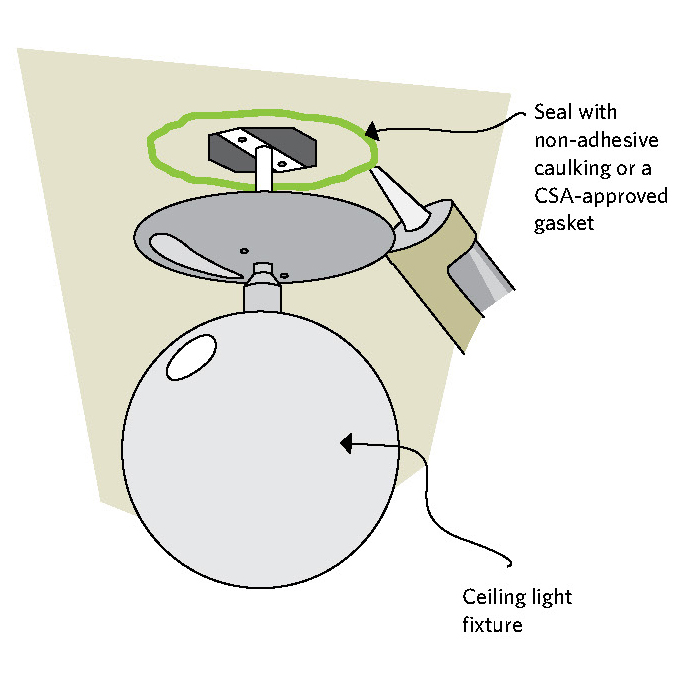Ventilation
Attic ventilation serves a number of purposes. It reduces summer heat buildup, prolonging the life of roofing and reduces air conditioner loads. After air sealing, attic ventilation is your second line of defence against the water vapour that may have found its way into the attic. It ensures a colder, well-vented attic space less prone to the formation of ice dams at the eaves.

Figure 5-8 Sealing a light fixture on the ceiling
Houses with peaked roofs and accessible attics are the easiest to vent by using the ratio of 1 to 300 (see below). This ratio refers to unobstructed vent area, so it must be increased if vents are covered with screening (to keep out insects, etc.) and with baffles (to keep out rain and snow), which reduce their clear area. Ideally, locate vents to allow for good cross ventilation from end to end and from top to bottom. However, although important, vents will not prevent condensation and will not solve the problems created by air leakage.
Make sure that existing attic vents are working properly and not blocked by insulation, debris or other materials. You may have to locate roof or soffit vents from outside if they are not clearly visible from inside the attic.
Although an airtight ceiling will significantly reduce the likelihood of moisture in the attic, building codes still require minimum attic ventilation. The ratio of vent area to ceiling area should be approximately 1 to 300.
Do not automatically increase ventilation. Also, do not use electric exhaust fans for attic ventilation as these can draw more air than can be supplied through the soffit vents. This will actually pull house air into the attic, resulting in greater heat loss and moisture accumulation. They are also prone to failure, noise production and increased energy use. Wind-driven, revolving roof vents do not create suction and are no more effective than other types of capped vents.
The location of vents is as important as their number and type. Often, a mixture of types and locations will work best. The following sections detail the best approach depending on your attic type.